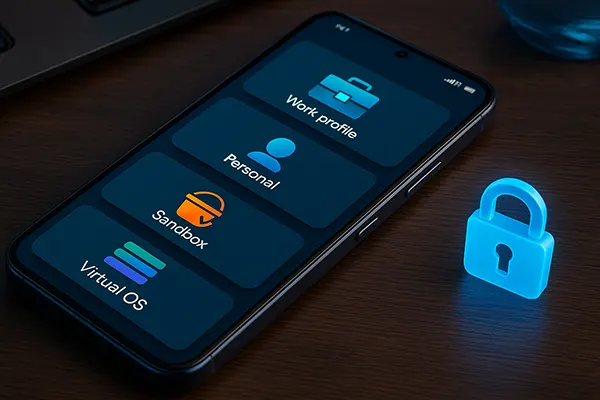How to Choose a Smartphone for Kids: Features, Safety, and Durability

Choosing the right smartphone for children can be a challenging task for parents. Modern devices offer a variety of features, but not all are suitable for younger users. This guide explores the essential considerations for selecting a smartphone for kids, focusing on functionality, safety, and durability. With thoughtful planning, parents can provide a device that enhances their child’s development while ensuring safety and reliability.
Key Features for Kids’ Smartphones
When selecting a smartphone for children, it is essential to identify features that align with their specific needs and age. A child-friendly smartphone should balance usability, durability, and functionality without overwhelming young users with unnecessary complexity. While technology is a valuable tool for education and entertainment, it is equally important to set boundaries for responsible usage.
Parents should evaluate the smartphone’s operating system and app ecosystem. Devices with child-specific profiles or environments like Google Kids Space or Apple Family Sharing provide excellent control over accessible content. Additionally, focus on models with user-friendly interfaces, allowing kids to navigate apps, games, and settings with ease.
Battery life is another critical consideration. Kids often forget to charge their devices, leading to interruptions during their activities. Look for models with energy-efficient processors and battery capacities exceeding 3000 mAh. These ensure uninterrupted usage throughout the day, even for children who use their devices heavily for entertainment or learning.
Educational and Entertainment Features
Smartphones designed for children should provide more than just communication capabilities. An ideal device includes access to educational apps, interactive games, and creative tools that stimulate learning and imagination. Platforms such as Google Kids Space curate safe and enriching content for children, ensuring they engage in productive activities.
Moreover, entertainment options like age-appropriate video streaming apps and e-books can make the device a source of fun. Parents should also ensure the smartphone supports downloadable content for offline use, allowing children to access resources even without internet connectivity.
Ensuring Safety and Privacy
In a digital world filled with both opportunities and risks, safeguarding children’s online experiences is a priority. The right smartphone should have built-in safety features that shield young users from harmful content while empowering parents to oversee their activity. Safety features are particularly critical for younger children who may lack awareness of online dangers.
Many devices include integrated tools for filtering inappropriate content, restricting downloads, and monitoring app usage. Third-party parental control apps, such as Qustodio or Norton Family, can extend these capabilities, offering comprehensive insights into browsing behaviour and screen time. Equipping smartphones with such tools ensures children access only age-appropriate material.
Communication about online safety is equally important. Educating kids on recognising phishing scams, avoiding suspicious links, and understanding the importance of keeping personal information private fosters their digital literacy. Encouraging open dialogue builds trust and prepares children to navigate online challenges responsibly.
Secure Device Features
Security measures on smartphones play a pivotal role in protecting children from both online and offline threats. Biometric authentication methods, like fingerprint scanning and facial recognition, ensure the device remains secure from unauthorised access. These features also teach children the importance of safeguarding their personal data.
Additionally, parents should consider devices that offer encrypted messaging or secure cloud storage. These features provide an extra layer of security, particularly for children who use their phones for communication or schoolwork. Teaching kids about strong password creation further reinforces responsible device use.

Durability and Cost Considerations
Children are more likely than adults to drop, mishandle, or lose their devices. Therefore, durability and cost are essential factors in selecting a smartphone for kids. Investing in a rugged phone ensures it can withstand the occasional accident, saving parents from frequent replacements or repairs.
Many manufacturers design smartphones specifically for younger users, incorporating durable materials like reinforced plastic frames and scratch-resistant screens. Devices with water-resistance or shockproofing further enhance their longevity, making them suitable for active lifestyles. Adding accessories such as protective cases and tempered glass screen protectors also helps prevent damage from everyday use.
Affordability is another significant consideration. Mid-range or budget smartphones often offer excellent performance without the high price tag. Parents can also explore refurbished or certified pre-owned devices as a cost-effective option. These devices maintain high-quality standards while reducing the financial burden of providing a smartphone for younger users.
Warranty and Customer Support
Choosing a smartphone with a reliable warranty and accessible customer support is equally important. Many brands now include accidental damage protection plans, covering repairs for drops, spills, or other mishaps. Ensuring the availability of replacement parts and repair services for the selected model can save time and money in the long run.
By carefully considering functionality, safety, and durability, parents can choose a smartphone that enhances their child’s life while minimising risks and costs. The right device serves as a tool for learning, creativity, and communication, empowering children to explore technology responsibly.




